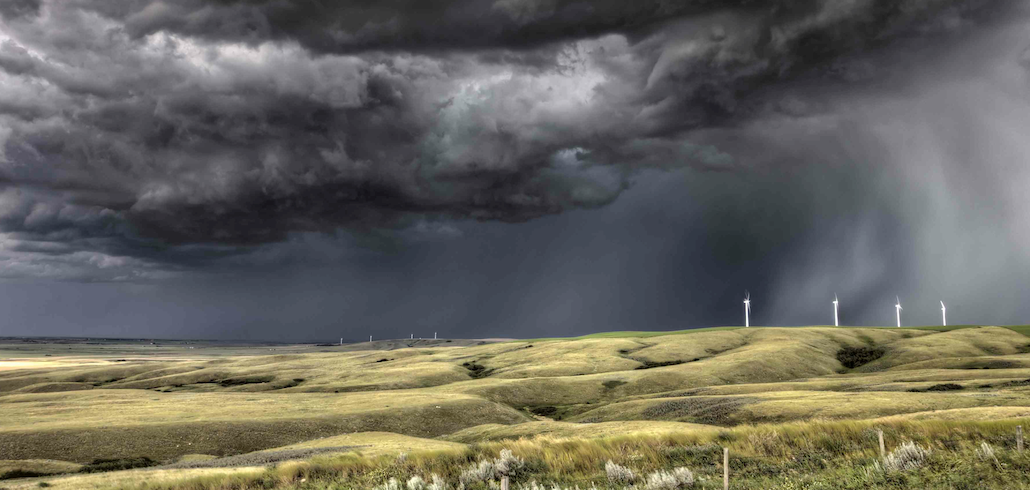Save 50% on a 3-month Digiday+ membership. Ends Dec 5.

If the first step to solving problems is recognizing them, the media industry took a step forward this week.
It was cold and rainy when digital ad execs descended on the Interactive Advertising Bureau’s Annual Leadership Meeting in Hollywood, Florida, befitting the gloom that permeated the gathering. The challenges are well known: ad fraud, bad user experience, varying viewability and measurement standards, and, now, fake news.
Marc Pritchard, chief brand officer at P&G and ANA chairman, kicked things off with a shot across the bow that was ostensibly directed at all parts of the ad ecosystem, but which many saw as having special meaning for the biggest social network, Facebook.
Calling for all agencies, media suppliers and platforms to adopt the industry standard for viewability set by the Media Rating Council and every supplier to adopt the MRC-accredited third-party verification standard this year, Pritchard said the time is up for those who use the excuse that they’re a walled garden or “special.” He also said P&G would require suppliers to take ad fraud-prevention steps and promised to bring transparency to his agency contracts.
The cloud of fake news also hung over the event. In a forceful speech, IAB president and CEO Randall Rothenberg ripped it as “supply chain failure” and a “moral failure” and called emphatically for the industry to “stop it now,” drawing applause.
Jim Norton, chief business officer and president of revenue at Condé Nast and incoming IAB chairman, also warned of media trust at risk and a broken ad system. Amanda Richman, president of Starcom USA, said she’s seeing a “loss of confidence” in digital advertising. “We’ve got to get it back on track; every dollar is up for grabs.” There was widespread agreement on the importance of quality content as a counterpoint to fake news and flagging reader trust.
Agreement on the problems is one thing; fixing them is another, and the solutions aren’t clear. Those in the audience expressed hope that the tough talk by an advertiser the size of P&G will force long-awaited change to come to a chaotic ad system that is universally seen as broken and reign in a social network many worry has gotten too big and powerful.
Ad position: web_incontent_pos1
“To date, there’s not been near the largest advertiser in the world expecting all their suppliers to conform. This is probably as big as it gets,” Eric Franchi, co-founder of Undertone and an IAB board member, said of P&G.
One scenario is that other marketers will join P&G’s rallying cry and put pressure on Facebook and other platforms to meet its demands. “Hopefully every other major brand will take notice,” said Mark Howard, CRO at Forbes Media.
Another outcome holds that other platforms like Apple News and Snapchat will get a jump on Facebook on the viewability and measurement fronts, which will incentivize the social media company to follow suit. Already, Snapchat and Twitter have used Facebook’s recent string of measurement screwups to draw attention to their own partnerships with outside measurement companies.
A big question that hung over the IAB meeting was whether marketers like P&G are prepared to accept higher pricing in exchange for advertising that’s not riddled with fraud. P&G also acknowledged its agencies need to be paid more, but it’s unclear where that will come from.
The optimist’s view is that if advertisers pay more to reach real consumers, not bots, it’ll pay off because they’ll get a higher return for their ad spending. But that understates the complexity of the ad ecosystem supply chain that’s riddled with countless ad tech companies.
Ad position: web_incontent_pos2
And while ad agencies have been using Facebook’s metrics snafus as leverage for their clients, privately they admitted they weren’t that big a deal and many declined to say that the errors would lead clients to spend less on the still-powerful platform.
“At the end of the day,” Franchi said, “the audience is there, and the ROI is there.”
More in Media

Digiday+ Research Subscription Index 2025: Subscription strategies from Bloomberg, The New York Times, Vox and others
Digiday’s third annual Subscription Index examines and measures publishers’ subscription strategies to identify common approaches and key tactics among Bloomberg, The New York Times, Vox and others.

From lawsuits to lobbying: How publishers are fighting AI
We may be closing out 2025, but publishers aren’t retreating from the battle of AI search — some are escalating it, and they expect the fight to stretch deep into 2026.

Media Briefing: Publishers turn to vertical video to compete with creators and grow ad revenue in 2026
Publishers add vertical video feeds to their sites to boost engagement, attract video ad spend and compete with news creators.
Ad position: web_bfu